Commentaries

Presentations, performances, debates and exhibitions provide a positive message about embracing change in the built environment.
The first annual festival of the New European Bauhaus - a cultural initiative of Ursula von der Leyen (President of the European Commission) - took place in Brussels 9 - 12 June 2022. This ambitious programme and its recent festival recognises the built environment's centrality to creating climate neutrality, quality of life and social equity. Matti Kuittinen (Aalto University, coordinator of the Nordic Bauhaus programme) reflects on the festival, summarises its takeaways and applauds the mainstreaming of the New European Bauhaus.

Concrete has high environmental impacts. Can the construction industry reduce the volume of concrete that is used?
After water, concrete is the most widely used substance on earth. Paul Shepherd (University of Bath) explains how deep reductions in the amount of concrete used in buildings can be achieved through advanced structural design and fabrication.

How can this low-energy approach to personal thermal comfort be implemented?
Mechanical engineer David Heinzerling, PE (principal at Taylor Engineers and chair of ASHRAE Standing Standard Project Committee 55 - SSPC-55, the committee overseeing the ASHRAE Standard 55: Thermal Environmental Conditions for Human Occupancy) looks at the barriers and opportunities for mainstreaming Personal Comfort Systems.

The IOT can coordinate PCS & HVAC systems to improve energy efficiency.
Joyce Kim (University of Waterloo) explains key findings and lessons arising from a Personal Comfort Systems field study using the Internet of Things. Key questions addressing the next steps for widespread adoption are posed.

Part of a a new series on Personal Comfort Systems: How barriers to this promising approach can be overcome.
Sabine Hoffmann (Technical University of Kaiserslautern) explains how an office chair with heating and cooling was developed and commercialised.

First in a new series examining how barriers to this promising approach can be overcome.
Ed Arens and Hui Zhang (Center for the Built Environment, University of California, Berkeley) introduce a series of commentaries that explore the development and adoption of personal comfort systems: decentralized building thermal control, in which occupants control their local environments with personal devices while the amount of central space conditioning (HVAC) is scaled back. This has been shown to improve thermal satisfaction and reduce energy demand. What are the barriers to its implementation?

How might an author choose an appropriate publisher and what are some of the processes involved in creating a book?
Philip Steadman (University College London) has authored a dozen books over 50 years. Reflecting on his own experiences, he offers some advice to new authors planning to publish books about architecture and building.

First published in 1964 and based on his doctoral thesis, this book puts forward a systematic method for designing products, buildings or settlements.
Philip Steadman (University College London) revisits and critiques this influential book by Christopher Alexander (1936-2022). Its method relies in part on the mathematics of set and graph theory, together with a computer technique for analysing complex systems and dividing them into their component sub-systems.
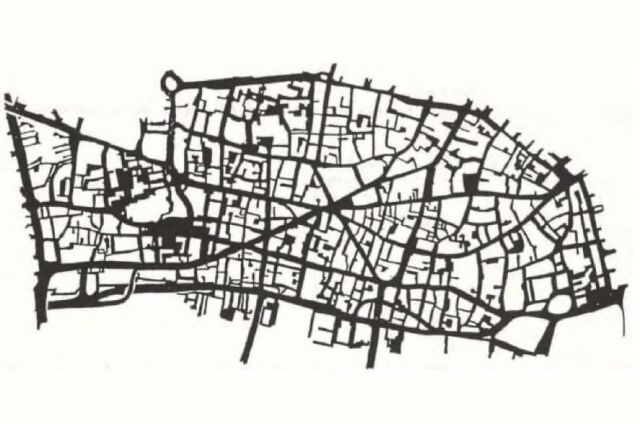
The Cartesian mechanistic worldview is essentially unable to create living cities. Lessons about connections can help to make cities more sustainable.
Bin Jiang (University of Gävle) reflects on Christopher Alexander's (1936-2022) pursuit of living environments with a recurring notion of far more small substructures than large substructures.

Viable alternatives exist to reduce the use of concrete in construction.
Does concrete have to be used widely? Given the large amounts of GHGs generated by concrete, what alternative materials and design optimisations exist? Ronita Bardhan (University of Cambridge) and Ramit Debnath (University of Cambridge) discuss some options for how we can immediately reduce concrete consumption.

Concrete has been used as a lazy solution for every problem in the built environment. We can reduce our dependency and use of concrete.
After water, concrete is the most widely used substance on earth. The huge environmental burden of concrete is generally assumed to be necessary, and much research is being devoted to reducing the carbon costs of manufacture. Robyn Pender argues we should ask deeper questions: How much do buildings truly require concrete? And do we deploy it wisely?
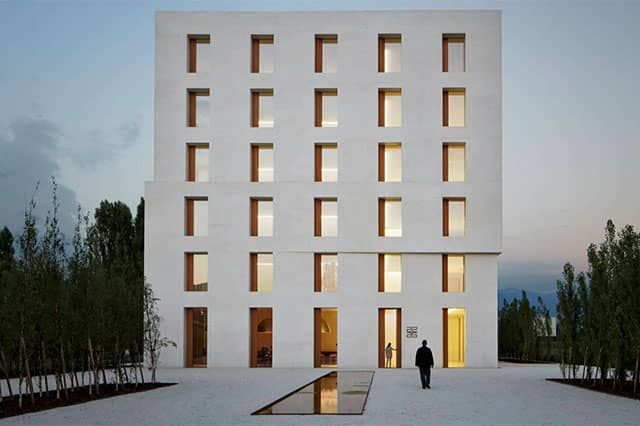
Are standards promoting air conditioning and marginalising natural ventilation?
Current codes are making buildings more reliant on air-conditioning at the expense of natural ventilation and other cooling solutions. Adam Rysanek (University of British Columbia) explains why this should be countered. Revolutionising codes in a manner that widens the responsibility of architects and engineers to deliver IEQ is urgently needed in advance of future public health crises and the climate emergency.
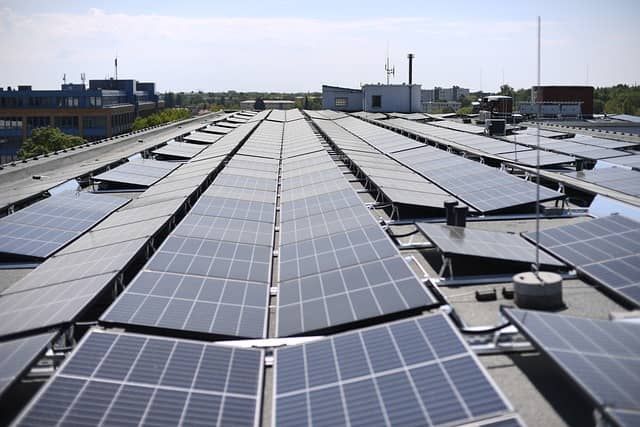
What is needed to make today's buildings zero-carbon ready?
The urgency to radically reduce primary energy consumption and greenhouse gas (GHG) emissions during the life cycle of buildings is undisputed. The ultimate goal is a building stock which does not rely upon GHG emissions and compensates for any remaining emissions using effective and acknowledged measures (Lützkendorf & Frischknecht 2020). Thomas Lützkendorf (Karlsruhe Institute of Technology) and Rolf Frischknecht (Treeze Ltd) explore the implications for making buildings now that are zero-carbon-ready.

Cross-laminated timber is a promising low-carbon structural solution. Research into its service life will create confidence and improve its competitiveness.
Ambrose Dodoo, Michael Dorn, Anders Olsson, Thomas K. Bader (Linnaeus University, Sweden) explain the potential of cross-laminated timber (CLT). This relatively new building technology makes it possible to construct tall wood-frame multi-storey buildings. However, the current generation of CLT-based buildings have yet to reach mid-service life. Accordingly, CLT is a subject of growing research to address open issues related to material efficiency, construction and connections, long-term structural performance and life cycle climate impacts. Efficient structural engineering design and solutions present opportunities to reduce the carbon footprint of CLT buildings.
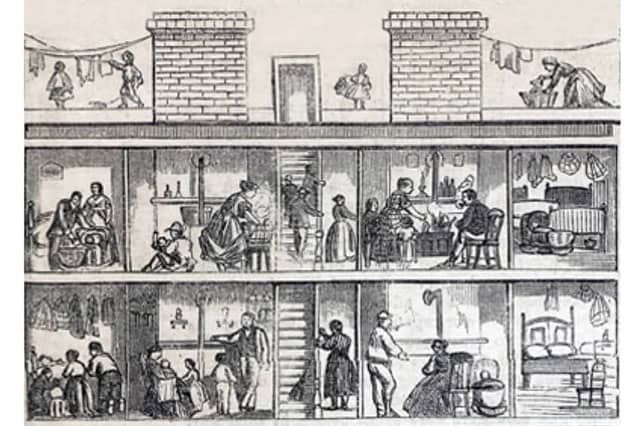
Past research on housing is still relevant to today's research and policy agendas.
The issues of how housing can be adaptable are not new. Construction historian Andrew Rabeneck reflects on research and practice from the 1970s that should be included in current conversations. Several different strategies exist: Limited Flexibility, Full Flexibililty, Build On (at a later date), Build In (at a later date), Adaptability (through the provision of extra space). One of the simplest and least cost options is the enhanced space provision i.e. an increase in room areas of up to 10% and looseness of fit - allowing 'occupant choice through ambiguity', with minimum predetermination of patterns of use.
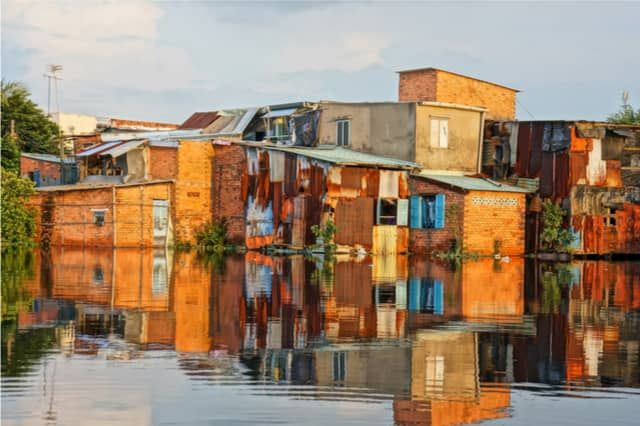
Were the needs and demands of cities and local governments marginalised in their roles and representation at COP26?
The 26th UNFCCC
Conference of Parties (COP26) in Glasgow represented a decisive moment in
history. Five years after Paris, it was a moment of reckoning - had countries
delivered on their promises? It was also the last chance for political leaders
to raise GHG reduction targets to prevent global warming above 1.5 oC. Linda Westman (University of Sheffield) reflects on COP26 and the prospects for cities and local governments.
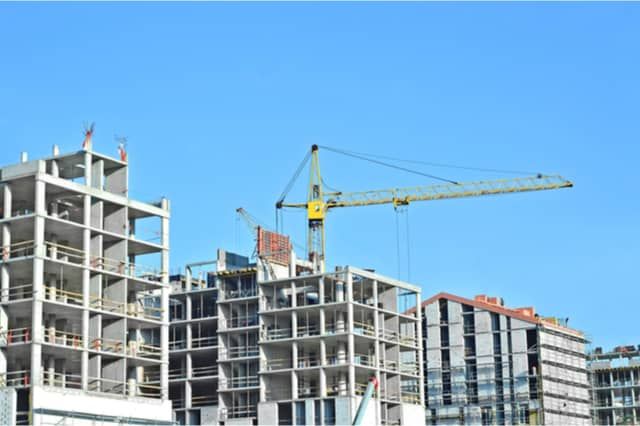
By Harpa Birgisdóttir (Aalborg University Copenhagen, DK)
Building regulations are important drivers for change. They have been focused on reducing the operational energy in buildings. This is now changing in some countries as evidence shows the significant amount of embodied emissions in construction materials. Additional new requirements are setting targets for embodied carbon in buildings and whole-life carbon assessments in order to decarbonise the built environment. Regulations are being implemented in Netherlands, France and Denmark, and planned in Finland and Sweden.
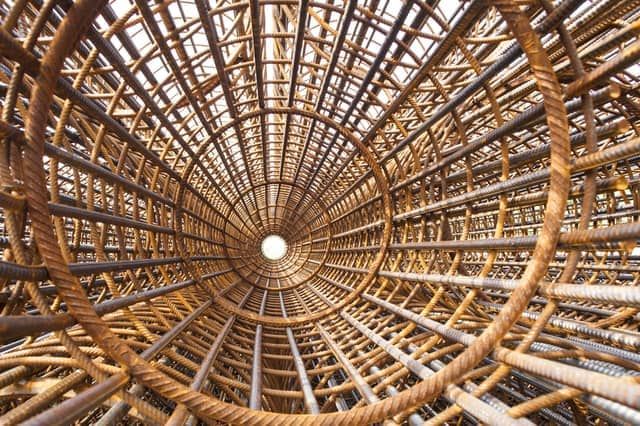
By Jane Anderson (ConstructionLCA, UK)
Although COP26 is focused on actions by state governments, their commitments are often underpinned by industry. The complexity of embodied carbon in buildings depends on regulation and standards, manufacturer compliance, professional engagement and clear methods / data. We must raise embodied carbon literacy and capabilities across the construction industry to expedite readiness for regulation. Several steps are required and some are already underway.

By Sonja Klinsky (Arizona State University, US) and Anna Mavrogianni (University College London, UK)
COP26 provides an opportunity to reflect on how the built environment community can facilitate deeper efforts towards adequate climate justice actions. Although the focus during COP26 will be on state governments, their commitments depend on consistent efforts pursued by non-state actors. Climate justice requires commitment from the built environment community who are obliged to act in the public interest. Opportunities are suggested for key actors that are well-placed to contribute to these efforts: universities and higher education, professional associations and local authorities.
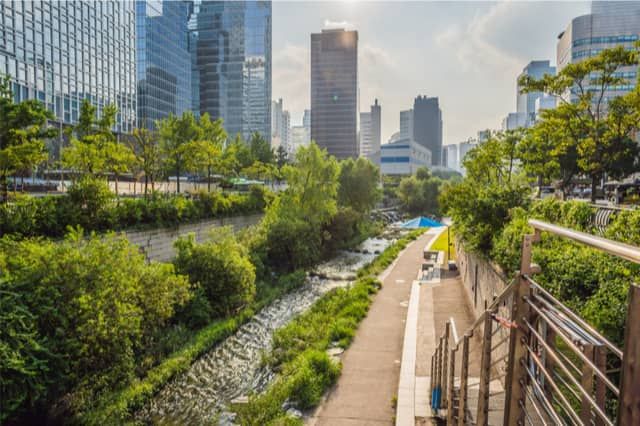
By Timon McPhearson (The New School, US)
Natural infrastructure is a critical urban infrastructure that provides fundamental and irreplaceable services for human health, wellbeing, and livelihoods. Urban development must quickly shift away from the dominant 20th century model that exacerbates hazards and risks by paving over urban ecological infrastructure. Firm commitments at COP-26 are needed to radically increase investments in nature-based solutions in cities: restoring, conserving and investing in green and blue infrastructure assets. This will reduce the impacts of climate change as part of an adaptation strategy and also improve wellbeing.
Latest Peer-Reviewed Journal Content
A framework for 1.5°C-aligned GHG budgets in architecture
G Betti, I Spaar, D Bachmann, A Jerosch-Herold, E Kühner, R Yang, K Avhad & S Sinning
Net zero retrofit of the building stock [editorial]
D Godoy-Shimizu & P Steadman
Co-learning in living labs: nurturing civic agency and resilience
A Belfield
The importance of multi-roles and code-switching in living labs
H Noller & A Tarik
Researchers’ shifting roles in living labs for knowledge co-production
C-C Dobre & G Faldi
Increasing civic resilience in urban living labs: city authorities’ roles
E Alatalo, M Laine & M Kyrönviita
Co-curation as civic practice in community engagement
Z Li, M Sunikka-Blank, R Purohit & F Samuel
Preserving buildings: emission reductions from circular economy strategies in Austria
N Alaux, V Kulmer, J Vogel & A Passer
Urban living labs: relationality between institutions and local circularity
P Palo, M Adelfio, J Lundin & E Brandão
Living labs: epistemic modelling, temporariness and land value
J Clossick, T Khonsari & U Steven
Co-creating interventions to prevent mosquito-borne disease transmission in hospitals
O Sloan Wood, E Lupenza, D M Agnello, J B Knudsen, M Msellem, K L Schiøler & F Saleh
Circularity at the neighbourhood scale: co-creative living lab lessons
J Honsa, A Versele, T Van de Kerckhove & C Piccardo
Positive energy districts and energy communities: how living labs create value
E Malakhatka, O Shafqat, A Sandoff & L Thuvander
Built environment governance and professionalism: the end of laissez-faire (again)
S Foxell
Co-creating justice in housing energy transitions through energy living labs
D Ricci, C Leiwakabessy, S van Wieringen, P de Koning & T Konstantinou
HVAC characterisation of existing Canadian buildings for decarbonisation retrofit identification
J Adebisi & J J McArthur
Simulation and the building performance gap [editorial]
M Donn
Developing criteria for effective building-sector commitments in nationally determined contributions
P Graham, K McFarlane & M Taheri
Reimagining circularity: actions for optimising the use of existing buildings
R Lundgren, R Kyrö, S Toivonen & L Tähtinen
Effective interdisciplinary stakeholder engagement in net zero building design
S Vakeva-Baird, F Tahmasebi, JJ Williams & D Mumovic
Metrics for building component disassembly potential: a practical framework
H Järvelä, A Lehto, T Pirilä & M Kuittinen
The unfitness of dwellings: why spatial and conceptual boundaries matter
E Nisonen, D Milián Bernal & S Pelsmakers
Environmental variables and air quality: implications for planning and public health
H Itzhak-Ben-Shalom, T Saroglou, V Multanen, A Vanunu, A Karnieli, D Katoshevski, N Davidovitch & I A Meir
Exploring diverse drivers behind hybrid heating solutions
S Kilpeläinen, S Pelsmakers, R Castaño-Rosa & M-S Miettinen
Urban rooms and the expanded ecology of urban living labs
E Akbil & C Butterworth
Living with extreme heat: perceptions and experiences
L King & C Demski
A systemic decision-making model for energy retrofits
C Schünemann, M Dshemuchadse & S Scherbaum
Modelling site-specific outdoor temperature for buildings in urban environments
K Cebrat, J Narożny, M Baborska-Narożny & M Smektała
Understanding shading through home-use experience, measurement and modelling
M Baborska-Narożny, K Bandurski, & M Grudzińska
Building performance simulation for sensemaking in architectural pedagogy
M Bohm
Beyond the building: governance challenges in social housing retrofit
H Charles
Heat stress in social housing districts: tree cover–built form interaction
C Lopez-Ordoñez, E Garcia-Nevado, H Coch & M Morganti
An observational analysis of shade-related pedestrian activity
M Levenson, D Pearlmutter & O Aleksandrowicz
Learning to sail a building: a people-first approach to retrofit
B Bordass, R Pender, K Steele & A Graham
Market transformations: gas conversion as a blueprint for net zero retrofit
A Gillich
Resistance against zero-emission neighbourhood infrastructuring: key lessons from Norway
T Berker & R Woods
Megatrends and weak signals shaping future real estate
S Toivonen
A strategic niche management framework to scale deep energy retrofits
T H King & M Jemtrud
Generative AI: reconfiguring supervision and doctoral research
P Boyd & D Harding
Exploring interactions between shading and view using visual difference prediction
S Wasilewski & M Andersen
How urban green infrastructure contributes to carbon neutrality [briefing note]
R Hautamäki, L Kulmala, M Ariluoma & L Järvi
Implementing and operating net zero buildings in South Africa
R Terblanche, C May & J Steward
Quantifying inter-dwelling air exchanges during fan pressurisation tests
D Glew, F Thomas, D Miles-Shenton & J Parker
Western Asian and Northern African residential building stocks: archetype analysis
S Akin, A Eghbali, C Nwagwu & E Hertwich
Join Our Community

The most important part of any journal is our people – readers, authors, reviewers, editorial board members and editors. You are cordially invited to join our community by joining our mailing list. We send out occasional emails about the journal – calls for papers, special issues, events and more.
We will not share your email with third parties. Read more
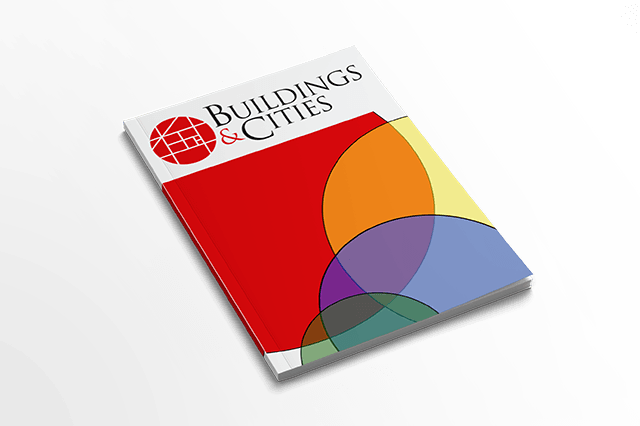
Latest Commentaries
COP30 Report
Matti Kuittinen (Aalto University) reflects on his experience of attending the 2025 UN Conference of the Parties in Belém, Brazil. The roadmaps and commitments failed to deliver the objectives of the 2025 Paris Agreement. However, 2 countries - Japan and Senegal - announced they are creating roadmaps to decarbonise their buildings. An international group of government ministers put housing on the agenda - specifying the need for reduced carbon and energy use along with affordability, quality and climate resilience.
Building-Related Research: New Context, New Challenges
Raymond J. Cole (University of British Columbia) reflects on the key challenges raised in the 34 commissioned essays for Buildings & Cities 5th anniversary. Not only are key research issues identified, but the consequences of changing contexts for conducting research and tailoring its influence on society are highlighted as key areas of action.